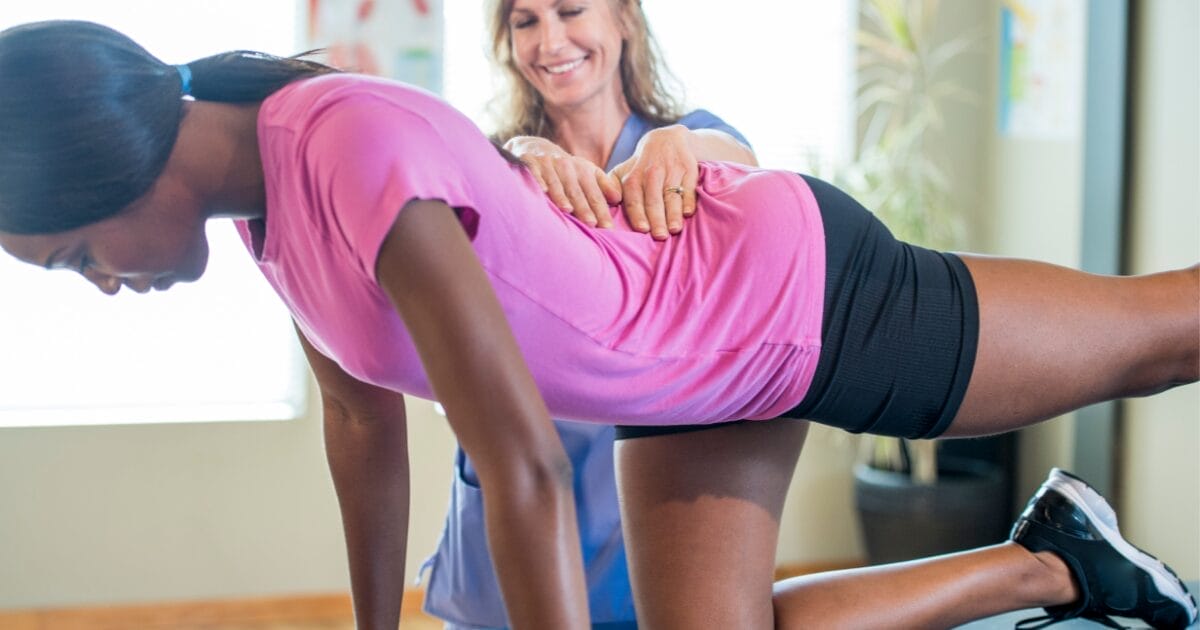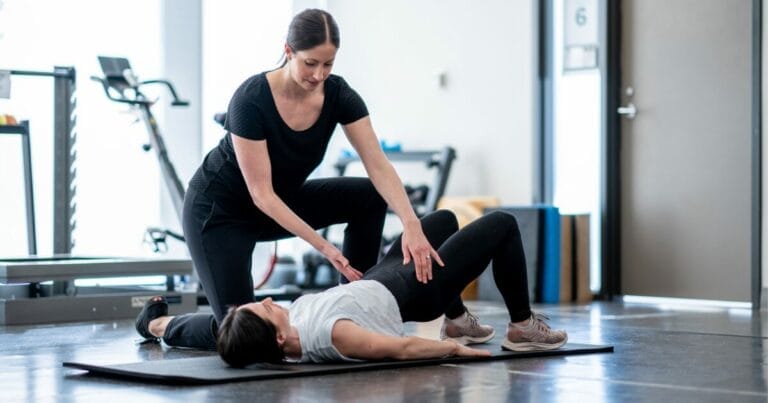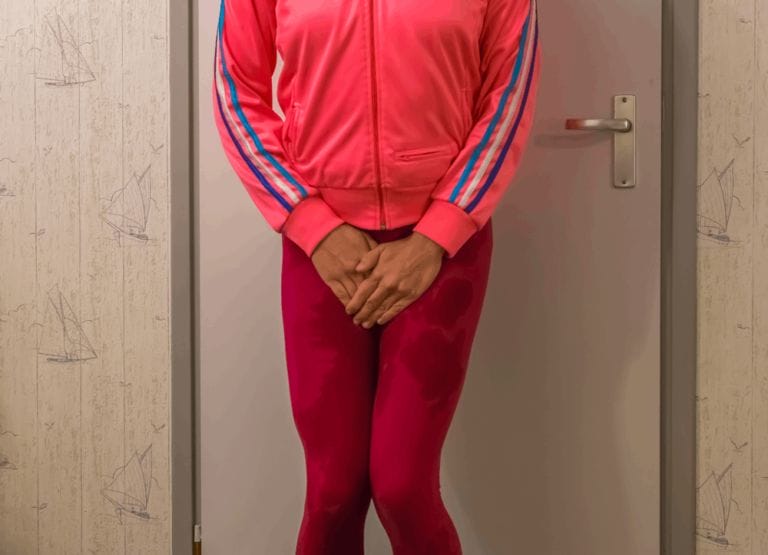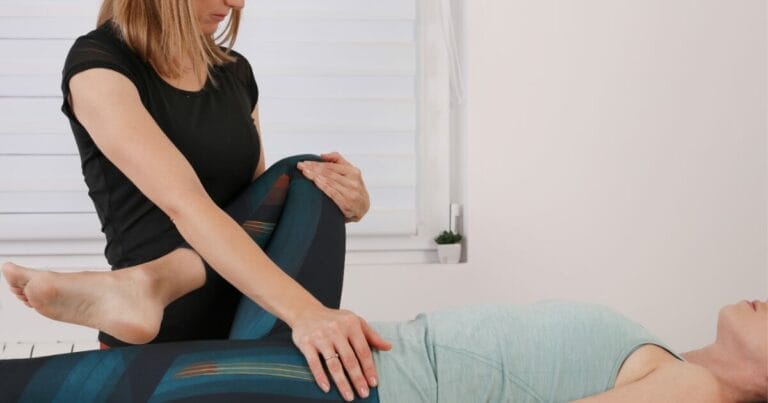Why Athletes Should Consider Pelvic Floor Therapy
In the world of sports, the role of the pelvic floor might not be as obvious as the muscles you see bulging on sprinters and weightlifters. But it’s just as crucial. These muscles are at the core of an athlete’s stability and affect everything from their legs to their overall movement. If there’s a problem…

In the world of sports, the role of the pelvic floor might not be as obvious as the muscles you see bulging on sprinters and weightlifters. But it’s just as crucial. These muscles are at the core of an athlete’s stability and affect everything from their legs to their overall movement. If there’s a problem with the pelvic floor, it can mess with an athlete’s game, cause pain that just won’t quit, or even lead to other injuries that could bench them for good.
It’s time to dive deeper into why pelvic floor therapy should be on every athlete’s radar. This isn’t just about getting stronger or more stable. It’s about recovering faster and pushing your limits safely. Pelvic floor therapy isn’t just one more thing to add to your training — it’s the key to unlocking your best performance.
So, if you’re an athlete or a coach looking to step up your game, don’t overlook pelvic floor therapy. It could be the game-changer you’re looking for. By strengthening these core muscles, you’re not just preventing injuries; you’re setting the stage for a longer, more successful athletic career.
Start your journey to a stronger pelvic floor and see the difference it makes in your performance. And remember, it’s not just about sports. A healthy pelvic floor is vital for a well-rounded fitness routine. So, let’s shed some light on this topic and help athletes everywhere understand the power of a strong pelvic floor.
Key Takeaways
In the competitive landscape of athletics, the significance of pelvic floor muscles may not be immediately obvious, unlike the pronounced muscles of sprinters and weightlifters. Nevertheless, their role is pivotal. These muscles form the foundation of an athlete’s stability and influence everything from leg strength to overall agility. When issues arise within the pelvic floor, it can disrupt an athlete’s performance, cause persistent discomfort, or even result in further injuries that might sideline them indefinitely.
It’s essential for athletes to realize the benefits of pelvic floor therapy. Beyond simply enhancing strength and stability, this therapy facilitates quicker recovery and allows athletes to expand their capabilities without risking harm. Pelvic floor therapy is not just an additional training element—it’s a critical component for peak performance.
Athletes and coaches aiming to improve their performance should not underestimate pelvic floor therapy. Strengthening these fundamental muscles not only helps prevent injuries but also lays the groundwork for a lasting and triumphant sports career.
Embark on a journey to fortify your pelvic floor and witness the improvement in your athletic prowess. Remember, a robust pelvic floor is not solely beneficial for athletes, but also for anyone seeking a comprehensive fitness regimen. Therefore, it’s important to highlight the importance of these muscles and assist athletes in recognizing the strength that comes from a well-conditioned pelvic floor.
Understanding Pelvic Dysfunction
Pelvic dysfunction is a broad term for various issues that affect how well the pelvic floor muscles work, providing stability, strength, and control. These issues can greatly hinder an athlete’s ability to perform and reduce their overall well-being. It’s critical to have a solid understanding of the pelvic region to spot these problems and understand the wide-reaching effects they can have on bodily functions.
The problems caused by pelvic dysfunction can range from urinary incontinence to pain during sexual activity, from a weak core to persistent pain conditions. Athletes need their pelvic area to function at its best to move efficiently and stay ahead of the competition.
When we talk about pelvic dysfunction in athletes, it’s not just about getting better after an injury; it’s about preventing injuries and boosting how well they perform. It’s vital for athletes who want to keep their edge and for healthcare providers who support them to really grasp these issues.
In today’s fast-paced world, where health and fitness are more important than ever, understanding and managing pelvic dysfunction is key. If you’re an athlete struggling with these issues or a clinician aiming to help, it’s time to delve into the details of pelvic health. By doing so, you can improve athletic performance and ensure a higher quality of life.
Remember that addressing pelvic dysfunction proactively can also prevent future injuries, making it an essential aspect of any comprehensive training program.
Strength Training Benefits
Recognizing the challenges posed by pelvic dysfunction, incorporating strength training into an athlete’s regimen can significantly enhance the stability and functionality of the pelvic floor muscles, leading to improved performance and injury prevention.
Functional training targeting the pelvic region helps correct muscle imbalances that are often overlooked in traditional strength programs. Here are key benefits:
- Increased Core Stability: A fortified pelvic floor contributes to a robust core, essential for athletic movements.
- Enhanced Endurance: Stronger pelvic muscles can improve endurance in activities requiring sustained effort.
- Reduced Injury Risk: Addressing imbalances reduces susceptibility to overuse injuries.
- Improved Force Transmission: A stable pelvic base allows for more efficient transfer of power during explosive movements.
- Greater Body Awareness: Athletes develop a keener sense of their bodies, aiding in injury prevention and skill execution.
This evidence-based approach ensures athletes can perform at their highest potential.
Injury Prevention Strategies
Injury prevention is essential for athletes, and strengthening the pelvic floor is a smart move in this regard. A strong core, built through specific exercises, is key in avoiding sudden injuries and issues that develop over time from repetitive movement. Including pelvic floor exercises in regular training can be a proactive part of any injury prevention strategy.
Firstly, consider the importance of a solid core. It’s like the foundation of a house – without it, everything else is at risk. By focusing on this area, athletes can enhance their overall performance and reduce the likelihood of getting hurt.
Now let’s move on to the benefits of pelvic floor therapy.It’s not just about avoiding injury; it’s about building a body that can better withstand the demands of sports. This isn’t just speculation; it’s backed by science. Athletes who take the time to strengthen these muscles can actually see a difference in their performance.
Moreover, in today’s fast-paced world of sports, having an edge can make all the difference. By embracing pelvic floor exercises, athletes can elevate their game to the next level.
In conclusion, injury prevention is more than just a precaution; it’s a key element of an athlete’s routine. By incorporating pelvic floor strengthening into their workouts, athletes are not just protecting themselves from injury – they’re setting themselves up for success.
Custom Quote: ‘To unlock your full potential as an athlete, embrace the strength that lies at your core. Pelvic floor exercises aren’t just preventative; they’re performance-enhancing.’
Strengthening Core Stability
How can athletes enhance their performance and minimize the risk of injury?
One effective approach lies in strengthening core stability, a crucial element in injury prevention strategies. Core stability is foundational for optimal muscle coordination and balance improvement, both of which are essential for athletes in any discipline.
Key benefits of a strong core include:
- Enhanced efficiency in movement patterns
- Reduced risk of lower back injuries
- Improved force transfer across the kinetic chain
- Greater ability to maintain optimal posture during performance
- Increased proprioceptive awareness for better agility and reaction times
Reducing Injury Risk
Athletes can significantly diminish the likelihood of sustaining injuries by incorporating tailored injury prevention strategies into their training regimens. Understanding injury mechanics plays a pivotal role in this process. By analyzing the common patterns and movements that lead to injuries, athletes and coaches can develop targeted exercises that strengthen the pelvic floor and surrounding musculature, thus providing better support and reducing the risk of injury.
Prevention education is also crucial; athletes must be knowledgeable about the risks inherent to their specific sports and how to mitigate them effectively. Through a combination of practical exercises and informed awareness, athletes can create a robust foundation for injury prevention, ensuring longevity and peak performance in their sports endeavors.
Rehabilitation Assessment to Recovery
Effective rehabilitation for pelvic floor dysfunction in athletes encompasses a comprehensive assessment, followed by a tailored recovery plan based on the individual’s specific needs and sport-related demands. The initial evaluation should include a biomechanical analysis and an examination of muscle coordination to identify dysfunctions contributing to the athlete’s symptoms.
Key components of an effective rehabilitation program may include:
- Strengthening exercises to improve muscle tone and endurance.
- Biofeedback techniques for enhancing muscle coordination.
- Manual therapy to address soft tissue restrictions.
- Breathing and relaxation strategies to facilitate muscular release.
- Functional retraining for integration into sport-specific activities.
Enhancing Athlete Performance
Pelvic floor therapy isn’t just for recovery—it’s key for boosting athletes’ performance by improving core stability and muscle control. Athletes can upgrade their muscle coordination through specific exercises and techniques. This is vital for carrying out intricate movements smoothly and effectively.
In addition, a strong pelvic floor is the backbone for endurance. It ensures a stable platform for consistent power during long-lasting activities. Athletes can train at higher levels with a lower chance of injury thanks to this therapy. By focusing on the pelvic floor muscles, athletes can see major improvements in their performance across various sports, leading to greater success.
Remember that strengthening the pelvic floor is a smart strategy for athletes looking to elevate their game. Whether you’re starting out or are a seasoned pro, incorporating pelvic floor exercises into your routine can unlock improved athletic prowess and help you stand out in your sport.
Individualized Treatment Plans
Creating a tailored treatment plan is crucial for athletes undergoing pelvic floor therapy. This personalized approach caters specifically to each athlete’s individual requirements and the particular needs of their sport. Focusing on sport-specific rehabilitation leads to precise interventions that improve the pelvic floor functions vital to an athlete’s sport. There’s a deliberate progression in exercise complexity to help athletes steadily enhance their pelvic floor capabilities, which is key to both their recovery and their performance.
It’s important to understand why customizing treatment plans is so essential. Different sports place different demands on the athlete’s body, and the pelvic floor muscles are no exception. By carefully assessing and addressing these unique demands, therapists can help athletes not only recover from injuries more effectively but also prevent future issues.
When designing these plans, therapists delve into the athlete’s world, exploring the specific movements and challenges they face. This deep understanding allows for the development of top-notch strategies that elevate the athlete’s rehabilitation process.
Tailored Therapy Approaches
Recognizing the distinct needs of each athlete, pelvic floor therapy programs are meticulously crafted to address specific symptoms and performance goals. Each plan is designed with an understanding that muscle coordination and strength are pivotal for optimal athletic performance while also dispelling common therapy misconceptions that may deter athletes from seeking help.
Tailored therapy approaches may include:
- Biofeedback techniques for improving muscle coordination
- Strength training exercises targeting the pelvic floor
- Stretching routines to enhance flexibility
- Breathing exercises to promote relaxation and control
- Education on pelvic floor function and its impact on sports performance
These personalized regimens are not only evidence-based but also integrate practical strategies that athletes can incorporate into their daily routines, ultimately leading to enhanced performance and reduced risk of injury.
Sport-Specific Rehabilitation Focus
Building upon the foundation of tailored therapy approaches, sport-specific rehabilitation focuses on creating individualized treatment plans that align with the unique demands of an athlete’s chosen sport.
By leveraging motion analysis, therapists can pinpoint biomechanical patterns that may contribute to pelvic floor dysfunction, allowing for targeted interventions.
Flexibility enhancement becomes a critical component of these plans, as it is essential for the dynamic movements inherent to many sports.
Through careful assessment and the integration of sport-specific exercises, pelvic floor therapy aims not only to rehabilitate but also to optimize performance.
This meticulous approach ensures that each athlete receives a bespoke rehabilitation strategy that addresses their specific functional requirements, thereby facilitating a more effective and efficient return to peak athletic form.
Progressive Exercise Adaptations
As athletes progress through their rehabilitation, individualized treatment plans are meticulously adapted to include progressive exercises that steadily increase in complexity and intensity, directly correlating with the athlete’s recovery milestones and sport-specific demands. This adaptation timeline is critical to restoring muscle coordination and ensuring a safe return to peak performance.
Key components of these evolving exercise programs include:
- Graduated resistance training to rebuild strength without overloading healing tissues
- Dynamic stabilization exercises to enhance proprioception and neuromuscular control
- Functional movement patterns that replicate athletic activities
- Core strengthening to support the pelvic floor and reduce the risk of re-injury
- Breathwork integration to promote diaphragmatic function in conjunction with pelvic floor muscle activation
Such strategic progressions are essential for athletes aiming to regain and surpass their pre-injury capabilities.
Core Stability Synergy
Strengthening the pelvic floor muscles and building core stability are crucial for athletes who want to perform at their best and avoid injuries. When these muscles work well together, athletes can move with more balance and coordination. By learning to control their pelvic floor muscles through targeted exercises, they support their spine and belly, which is vital for any kind of movement in sports.
Enhancing core stability through pelvic floor strength is like laying a strong foundation for a building; it’s the base that allows for more complex and precise movements in sports. This kind of training is important for athletes because it helps the body work as one unit, making movements smoother and more efficient.
For athletes aiming for the top, focusing on developing a strong connection between the pelvic floor and core muscles is essential. This isn’t just about being strong; it’s about having the control and coordination to use that strength effectively in the fast-paced and demanding world of sports.
Pelvic Floor Therapy Overview
Pelvic floor therapy is a focused method aiming to improve athletic performance and prevent injuries. It concentrates on the pelvic floor muscles, which are fundamental for supporting the bladder, bowel, and sexual health, as well as for ensuring stability and coordination during exercise.
Let’s delve into the crucial aspects of pelvic floor therapy:
- Evaluating how well pelvic floor muscles function.
- Personalized workout plans.
- Techniques using biofeedback for muscle training.
- Knowledge about correctly engaging the pelvic floor.
- Tips for integrating pelvic floor care into everyday life.
It’s essential to debunk the myth that pelvic floor therapy is only for postpartum women; athletes too can greatly benefit from it to boost their control and performance.
Frequently Asked Questions
Can Pelvic Floor Therapy Improve Sexual Function and Intimacy for Athletes?
Pelvic floor therapy could significantly boost sexual function by enhancing muscle tone. This improvement in muscle strength can help athletes feel more confident sexually, which may help them overcome issues with intimacy. As a result, they might enjoy a more satisfying sexual life.
Let’s dive into why this matters. Strong pelvic floor muscles are key for sexual function, and for athletes, who often focus on physical strength, this aspect of health shouldn’t be overlooked. By working on these muscles, athletes can ensure that they’re at their best, both in their sport and in their personal lives.
It’s also worth noting that sexual health is a critical component of overall well-being. When athletes feel good about their sexual health, it can positively impact their performance in other areas. It’s not just about the physical benefits; it’s about feeling empowered and connected to one’s body.
For those looking to start pelvic floor therapy, remember that this is a personal journey. Everyone’s body is different, and what works for one person might not work for another. It’s important to find a qualified therapist who can tailor the experience to your unique needs.
Are There Any Notable Differences in Pelvic Floor Therapy for Male Versus Female Athletes?
In today’s active world, pelvic floor therapy stands out as a key element in an athlete’s training, regardless of gender. For male athletes, the therapy primarily aims at improving muscle coordination and preventing injuries. On the other hand, female athletes often need specialized care for conditions like recovery after childbirth. However, both male and female athletes find value in exercises that build the core and correct pelvic alignment.
Firstly, it’s important to understand that a strong pelvic floor is vital for all athletes as it provides stability and supports the internal organs. Secondly, exploring the differences in therapy, we find that male athletes might embark on a regimen that enhances their performance by focusing on muscle coordination. This is because their sports activities may put different demands on their bodies compared to females.
Similarly, female athletes may require therapy that deals with the unique changes their bodies go through, such as pregnancy and childbirth. These experiences can affect the strength and function of the pelvic floor. Equally important is the postpartum period, where specialized exercises can help in regaining strength and stability.
To shed light on the common ground, both males and females benefit from core strengthening. These exercises are crucial for improving overall athletic performance and injury prevention. Moreover, proper pelvic alignment can lead to better body mechanics and efficiency in movement, which is essential in any sport.
In conclusion, pelvic floor therapy should be tailored to the individual needs of the athlete while maintaining the core principles that benefit all. It is essential for athletes to embrace these therapies to maintain top-notch performance and longevity in their sports careers.
How Does Age Affect the Approach to Pelvic Floor Therapy for Athletes, Especially Those in Masters Categories?
As athletes get older, especially those competing in masters categories, it’s important to adapt their pelvic floor therapy. They may need specialized programs that consider their changing bodies to maintain effective and sustainable training. Older athletes’ bodies are different, and their training should reflect that.
Customizing pelvic floor therapy for older athletes helps them stay at their best. It’s key to design workouts that suit their age, which might mean changing exercises or how often they train. This helps them keep competing and avoid injuries.
In short, pelvic floor therapy for older athletes should be unique to their needs, taking into account the changes that come with age. This ensures they can keep doing what they love at a high level.
What Are the Psychological Impacts of Pelvic Floor Dysfunction on Athletes, and Can Therapy Address These Aspects?
Pelvic floor dysfunction has a significant psychological impact on athletes, potentially leading to increased performance anxiety and mental stumbling blocks. Therapy plays a crucial role in addressing these issues by improving focus and self-assurance, which are vital for athletes aiming to perform at their best.
Firstly, it is crucial to understand that the mental challenges brought on by pelvic floor dysfunction are just as important as the physical ones. Athletes often deal with the pressure to perform, and when pelvic floor issues come into play, that pressure can intensify.
Secondly, therapy is not just about physical rehabilitation; it’s about mental recovery as well. By delving into therapy, athletes can unlock the tools they need to manage their anxiety and mental barriers, enhancing their overall performance.
Remember that therapy offers more than just a solution to a problem; it provides a space for athletes to discover solace and build resilience against the psychological challenges of their condition. In conclusion, therapy is an essential component in helping athletes overcome the hurdles of pelvic floor dysfunction, leading to better focus, increased confidence, and, ultimately, top-notch performance.
As athletes embark on this journey, they should seek out qualified professionals who can guide them through the complexities of their condition and assist in devising a tailored therapeutic approach. By doing so, they will be better equipped to tackle both the physical and psychological demands of their sport.
How Can Athletes Incorporate Pelvic Floor Exercises Into Their Existing Workout Routines Without Overtraining or Causing Further Issues?
Athletes looking to enhance their fitness routine can start by incorporating pelvic floor exercises. These exercises are not only about strengthening the pelvic muscles but also integrating them with the core, which is crucial for overall stability and injury prevention. By focusing on these often overlooked muscles, athletes can ensure their training is holistic and avoids the risk of overtraining.
Firstly, it’s essential to understand the importance of a balanced workout regimen. Athletes should embrace the idea that pelvic floor exercises are not an additional burden but a key component of their fitness journey. To embark on this path, include exercises like Kegels, bridges, and squats into your routine, which can be done in conjunction with core workouts.
Moreover, it is important to schedule these exercises thoughtfully to prevent fatigue. Instead of adding extra sessions, athletes can leverage the days they are already focusing on core work to include pelvic floor exercises. This way, they can supercharge their routine without adding extra time.
Remember that the goal is to maintain a competitive edge without causing harm. When done correctly, these exercises can unlock improved performance and elevate an athlete’s overall training. To ensure proper technique and avoid injury, it might be beneficial to consult with a fitness professional who can provide personalized guidance.







